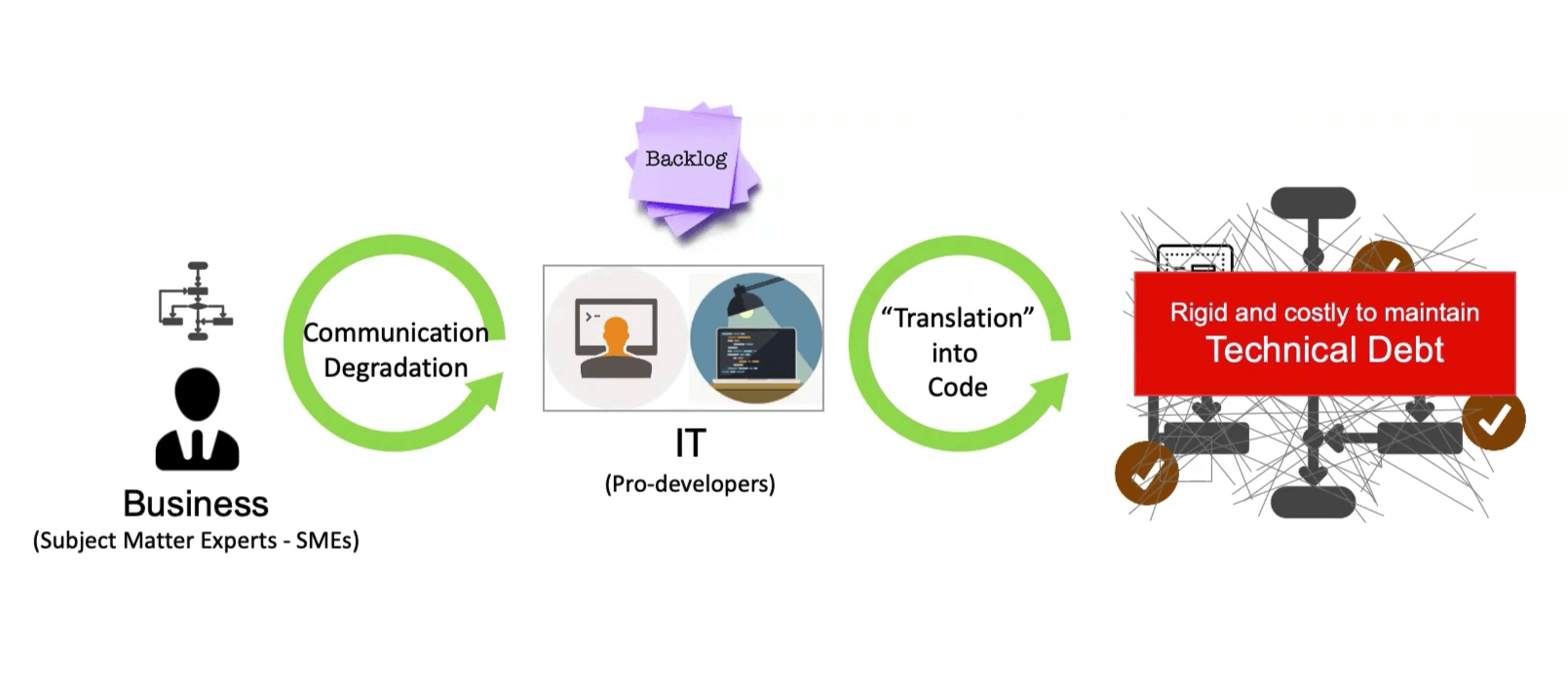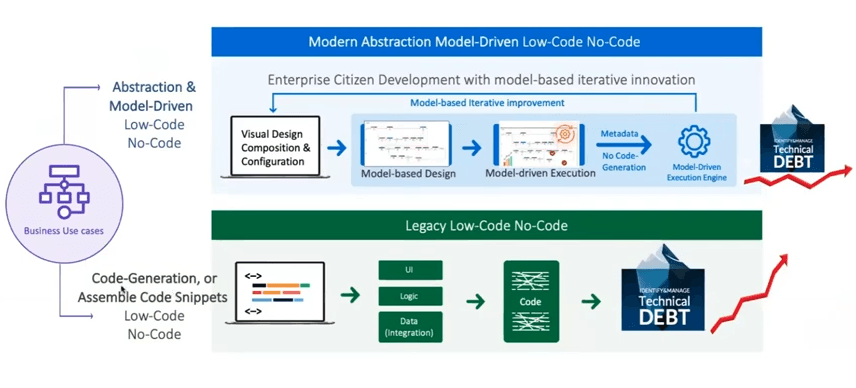About the Event
An international seminar, the 'Global Low-Code, and No-Code Virtual Conference,' was held from Aug 24th -26th, 2022. Jesse Shiah, Co-founder, and CEO of AgilePoint, presented a session about "Enabling Enterprise Citizen Development with Modern Low Code No Code" at this event.
Here's an overview of the learning outcomes and recording of the session.
Key takeaways from the session include:
- How to differentiate between the legacy Low-Code No-Code tools and modern Low-Code/No-Code platforms?
- Three characteristics of modern Low-Code/No-Code architecture necessary to support enterprise Citizen Development with strong governance
- How can enterprise Citizen Development enable a new generation of Agile operating model?
Why Low-Code/No-Code?
IT department traditionally has been the center of gravity for new application development in all companies. Every department and business unit requests IT to develop new apps, from HR and Sales to Customer Services and Finance. It results in a never-ending backlog and technical debt that's expensive to maintain. The image below captures this traditional paradigm and its drawbacks.
Fig 1- The Business-IT Divide | Traditional Software Development Paradigm

Giving Control back to Subject Matter Experts
As you can visualize from the image above, Subject Matter Experts (SMEs) are the most essential (and primary) stakeholders in requesting and using new business applications. Hence, there's a need to give them greater importance in executing application projects. That's where modern Low-Code/No-Code platforms provide an avenue to SMEs by giving them the tools to ideate and develop new apps while staying compliant with the corporate IT's governance policies.
These platforms empower the business to be in the driving seat, whereas the legacy Low-Code tools did not empower SMEs to play a greater role in fulfilling their application development needs. Even if these tools provided a visual canvas and drag-and-drop widgets for app development, they could not solve the underlying code generation problem.
We believe code generation-based Low Code tools hide the code instead of reducing it. In contrast, modern Low Code platforms fundamentally shift the application development paradigm by reducing code through metadata generation and model-driven execution of applications.
Modern Low-Code No-Code tools serve both IT and business users so that the latter could develop applications themselves and the former could govern the development platform and processes and even extend applications and systems where needed.
Fig 2- Legacy Low Code vs. Modern Low-Code/No-Code

Let's watch and learn.
Are you ready to reengineer your business
automation processes?

A modern process automation and orchestration platform that enables you to open up and seize new business opportunities, supercharge innovation, unlock new levels of efficiency and productivity, and deliver the experiences that help you win.
Follow Us
Platform

Automate business processes and workflows at scale. AgilePoint helps enterprises democratize and accelerate digital transformation, reduce technical debt and future-proof ROI.
Resources
© 2023 AgilePoint. All rights reserved.



